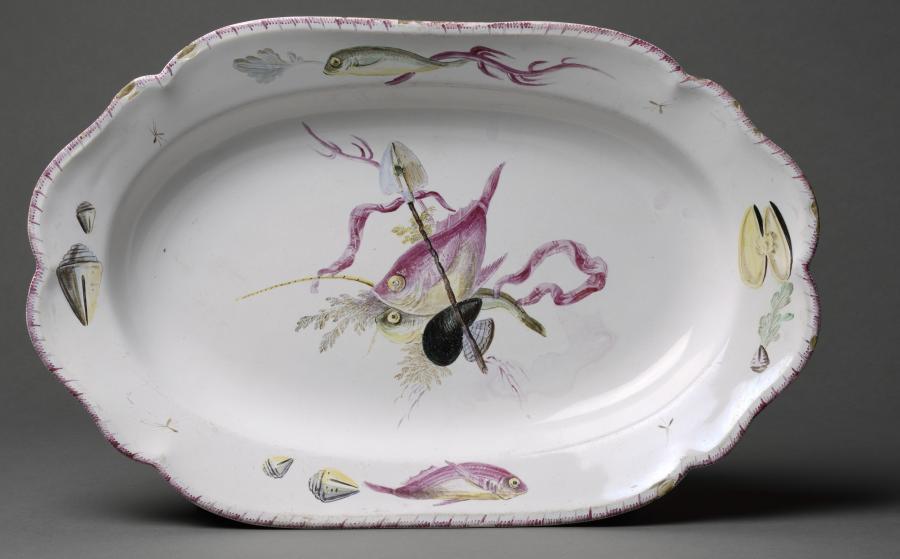Oblong dish with lobed edges
Information sur l’artiste
Veuve Perrin factory, Marseille

Plat oblong à bord lobé, 1765 - 1775.
Image © Lyon MBA - Photo Alain Basset
Earthenware, characterised by its soft, porous texture, was developed to compete with the Chinese porcelain imported by Portuguese and Dutch traders in the 17th-century. A great number of factories sprang up in the South of France. In 18th-century Marseille, fifteen working factories were active at the time. From 1750 onwards, the Veuve Perrin establishment was particularly successful, producing large amounts of earthenware items decorated using the 'low-fire' technique. This method, which allowed the patterns to be retouched, was created in order to widen the colour palette, thus enabling the use of the pink colour known as 'purple of Cassius': a pigment made using gold and tin chloride which could not withstand the high-temperature firing that was typically used in 'high-fire' decoration.
This dish, signed on the reverse with the monogram VP, is characteristic of Marseille's tableware 'aux poissons'. Its design, inspired mostly by marine flora and symbols of fishing, was painted onto the fired, enamelled surface, and the colours, mixed with fluxes, were fixed in successive firings. Pink is the dominant colour: it is used for the outer edge of the marli and the central trophy-style motif. Veuve Perrin’s earthenware, with its rich colour palette and large variety of shapes and decorative designs, was widely imitated in this period.
Veuve Perrin factory, Marseille
1765-1775
Tin-glazed earthenware with 'low-fire' decor
H.4.4; L. 36.1; Dia. 23.1 cm
Bequeathed by Claudius Côte in 1961
Inv. 1961-228





